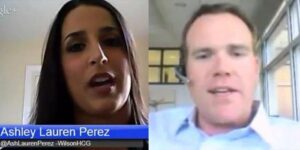
Social Business and Social Good: #TChat Preview
Social media seems like the perfect way to foster relationships between business and non-profit organizations. But results are mixed. What’s missing? How can companies benefit from helping?

Social media seems like the perfect way to foster relationships between business and non-profit organizations. But results are mixed. What’s missing? How can companies benefit from helping?

What can industry conferences teach us about how to overcome generational stereotypes in the workplace? The Recruiting Trends Social Summit reminded me this week that the TalentCulture community mantra is more than mere words. Together we ARE better…

Today’s workplace is no place for age-based stereotyping. And yet, negative stereotypes persist. How can we break free from these assumptions that threaten professional relationships and business performance?

Even today, negative stereotypes can cast a shadow over our professional lives. See what experts from a top recruiting outsourcing firm say about labels in the workforce – this week’s focus on #TChat…
When organizations make learning a cultural imperative, it can lead to a sustainable business advantage. But that’s easier said than done. Talent management expert Josh Bersin leads the #TChat conversation this week…
What’s the recipe for more creative, satisfying solutions to challenges in life and in business? Try a dash of collaboration…
Collaboration – sounds good in theory, but hard to achieve in practice. Understanding human nature can help us tap into the best of collaborative techniques in the workplace. That was our goal this week…
Getting up close and personal with brand humanization. An intimate slice of life…
Social media makes it possible for businesses to interact with employees, customers and others in ways that are far more immediate, direct and personal. But blending high tech and high touch requires work…
#TChat Teaser Video: Take look at how Jamie defines brand humanization, and explains why it’s important for everyone to understand this concept…
Innovation isn’t magic. It’s the result of a culture designed to encourage fearless pursuit of fresh ideas – and the willingness to embrace failure as part of the process. It comes from conscious effort to gather input from a diverse and dedicated workforce…
Feedback is essential for professional assessment, coaching and development. But what forms of recognition matter most – and how can leaders make recognition a more effective tool to improve performance?
How can you stay ahead of the curve in today’s job environment? After a week of TalentCulture community discussion, I’m reminded that the key is not how fast or how elegantly your career moves forward – it’s how many others you bring along for the ride.
The holidays are upon us again! So here at TalentCulture, we’re tapping into social business leaders at Mashable and HuffingtonPost/AOL to discuss the important relationship between corporate culture, community engagement and responsible leadership – in a global sense, as well as around your local watercooler…
Staying focused at work is a skill, but being mindful of the choices we make is also a decision. Sometimes, the technology that connects us also frees us to multitask. But how far can we push that without suffering downside consequences?
What if we all slowed down the pace of our work – or focused on just one thing at a time? Would we be more effective or ultimately more efficient? Would organizations see a boost in performance? Maybe it’s time that the TalentCulture community pauses to consider the possibilities…
People have very strong feelings about the definition of “community” in a social business context. And this week in the World of Work, we’ll dig even deeper into the differences and similarities among talent communities, social communities, and other communities supported by digital channels…
I never get tired of talking about social communities and their impact on brands and the recruiting process for the right talent. But what does it mean to “manage” communities – and what is the role of a “community manager” in today’s social business environment?
“People don’t want to be managed. They do want to be led.” What distinguishes great leaders from wanna-bes? Character plays an integral role. That’s the premise of a book that inspired this week’s TalentCulture #TChat topic…
If it wasn’t for those pesky, messy, meddling humans, the world of work would actually work flawlessly. We’d work together happily and collaboratively, without deceit,
In today’s increasingly informal work environment, what’s the most appropriate want to bring new hires and contractors into the fold? How can you make a lasting first impression, and support new hires throughout their indoctrination?
It’s no secret that organizational cultures have been hurting in recent years. But how can we expect culture to flourish on diminishing investment in the “human” side of business? And how long can HR wave its magic wand until business leaders reinforce culture at its foundations? #TChat sparked some serious questions…
Business is messy – and it’s only getting messier. So perhaps that’s where HR can truly make a difference today – to know the business, staff the business, teach the business and grow the business – all predicated on managing the messy yet mingled bad with the good. We can lead the way in helping business learn from its mistakes…
I’d like to talk about several pet theories about employer/employee relationships. First, employees work to make money. Second, it’s Maslow’s world, and we just live in it. So what does this mean for the world of work? Let’s look closer…
Innovation and entrepreneurship, paired with good old-fashioned hard work, have created a new era of “fringe” benefits. But despite all the fancy tricks organizations offer these days, it seems like they may not get it. Recognition 101 = Listening.